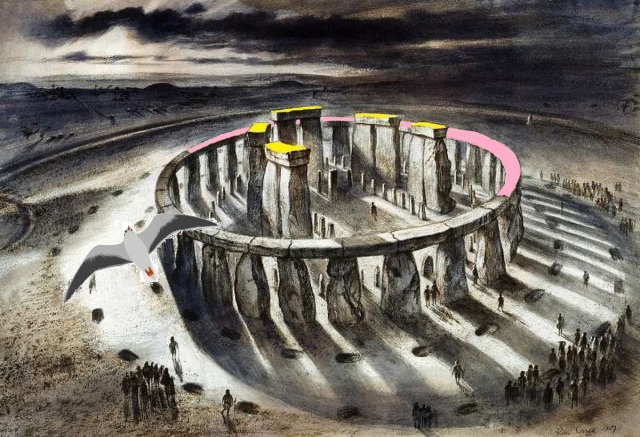I've added a token seagull (sorry it's upside down!). Why? Because what you see is a bird's eye view of Stonehenge that conveys a crucial aspect of that unique and stunning structure, one that is not immediately obvious to a tourist or other visitor viewing from ground level.
STONEHENGE IS ESSENTIALLY A GIANT PERCH FOR BIRDS!
Why? Followers of this blog will be aware of the scientific "model" that has been developing here and on my specialist Stonehenge/Silbury Hill site these last 6 years.
I believe that Stonehenge was created as a "pre-crematorium", where the newly deceased were first subject to what is euphemistically termed "sky burial", aka excarnation, aka de-fleshing. (Or, as I prefer to call it, AFS (avian-facilitated skeletonization) - as still practiced in Tibet and elsewhere.
More to follow.
Addendum: March 16, 2018
Sorry to repeat myself, but I've decided to add the same image you see above as an addendum to ALL my Stonehenge postings (some 24 in all, here and on my specialist Stonehenge site). Why not – since it’s my considered answer to the ‘mystery’ of the monument’s peculiar architecture, the conclusion to some 6 years of deliberation?
Reminder*

I say Stonehenge was designed as a giant bird perch, a ceremonial monument dedicated to ‘sky burial’, i.e. soul release from mortal remains to the heavens via AFS (avian-facilitated skeletonization, considered the height of fashion (and practicality) in Neolithic-era 2500BC! The stripped remains were then cremated, so an apt description of Stonehenge might, as previously suggested, be PRE-CREMATORIUM.



















